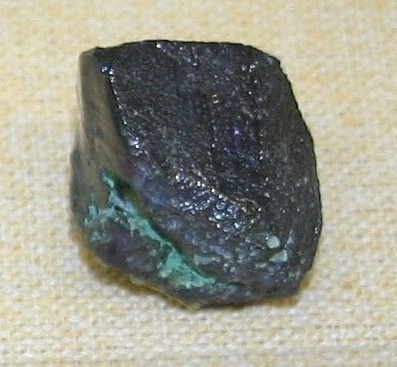
| CUPRITE MINERAL FACTS |  |
|
| The Gem and Mineral Collector's Photo Gallery by Nevada Outback |
|
. Cuprite Mineral Facts:
Chemical Formula: Cu2O 88.8%
Copper by weight. Colors: Red to ruby red shades often with a metallic shine. Streak is brownish-red Hardness: 3.5 to 4.0 Density: 6.1 Cleavage: distinct, one direction. Crystallography: Isometric Luster:. Metallic to adamantine in clear crystals. Optics: (Refractive Index): 2.85 |
|
|
Identification and Diagnostics
Occurrence,
Localities and Origins: In the United States it occurs at Cornwall, Lebanon Co., Penn. It is also found associated with the native copper from Lake Superior at Keweenaw Point, Mich.; at the copper mines in St. Genevieve Co., Mo.; Found in connection with the copper deposits in Arizona. Fine crystals come from Bisbee, and at other places in Arizona. The fibrous variety is beautifully developed at Morenci in the same State. Cuprite is mined with- other copper compounds as an ore of copper. Return to the Mineral Collectors Information Page |
|
|
 |
||
Please note that the author, Chris Ralph, retains all copyrights to this entire document and it may not be reproduced, quoted or copied without permission.

NEVADA OUTBACK GEMS TURQUOISE AND JEWELRY